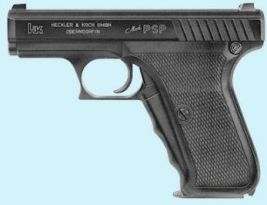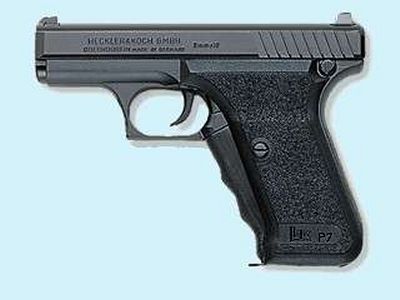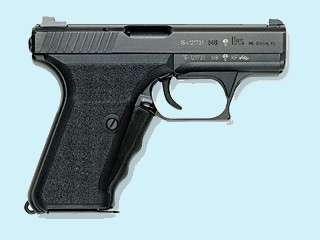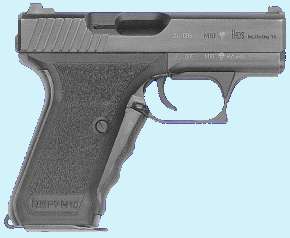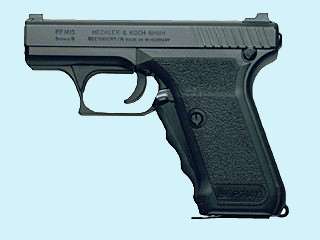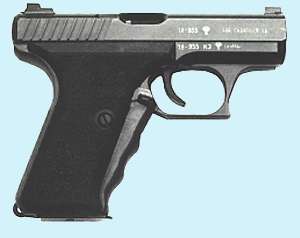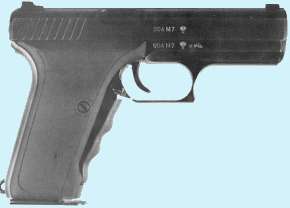Updated Wednesday - July 30, 2008
...................................................................................................................................Extremists curse Olmert with Pulsa Denura
Right-wing extremists hold mythical Kabbalistic ‘death curse’ against prime minister, exactly one year after identical ritual against then-Prime Minister Ariel Sharon Efrat Weiss Published: 06.27.06, 22:08 / Israel News
.......................................................................................................................................................................
 "We are tired of fighting, we are tired of being courageous, we are tired of winning, we are tired of defeating our enemies...." Israeli prime minister Ehud Olmert told the world in June 2005
"We are tired of fighting, we are tired of being courageous, we are tired of winning, we are tired of defeating our enemies...." Israeli prime minister Ehud Olmert told the world in June 2005 Ehud Olmert and Israel's other treasonous leaders publicly promised that they would destroy Hezballah - Instead, they have handed Hezballah and Israel's many other Muslim terrorist enemies a tremendous physical and psychological victory
Ehud Olmert and Israel's other treasonous leaders publicly promised that they would destroy Hezballah - Instead, they have handed Hezballah and Israel's many other Muslim terrorist enemies a tremendous physical and psychological victoryEhud Olmert will step down after his party picks successor in two months
DEBKAfile Special Report
July 30, 2008, 8:54 PM (GMT+02:00)

Israeli prime minister to quit
The announcement was made in a special broadcast to the nation from the prime minister’s Jerusalem residence Wednesday night, July 30. Olmert said he would not interfere in his Kadima party's primary vote for his successor, the first round of which takes place Sept 18 followed by a run-off if necessary on Sept. 24.
He promised a smooth transition of government to whoever Kadima elects to ease the formation of an alternative government. The prime minister said he would then devote himself to clearing his name and proving his innocence of the half dozen corruption investigations pending against him. He admitted that public and political pressure had forced him to take this step.
Four ministers have declared their candidacy in the vote to replace him, Tzipi Livni, foreign affairs, Shaul Mofaz, transport, Avi Dichter, internal security and Meir Sheetrit, immigration. However, the next government is unlikely to survive long and Israel may face a general election later this year or early 2009.
Livni, Mofaz and defense minister Ehud Barak were in Washington when the prime minister made his announcement. Livni cancelled a news conference she had scheduled.
Olmert spoke bitterly of having to contend with constant attacks on his probity while responsible for the nation’s most fateful decisions. I am proud to live in a country where the prime minister is not above the law,” he said, “but neither should he be beneath it.” He declared he had satisfactory answers to all the charges against him and was sure the truth would see the light.
While he defended his record during two and a half years in office, most political observers agree that Ehud Olmert will go down as one of Israel’s least competent prime ministers.
He leaves a country beset with an accumulation of daunting security and social problems, the most prominent being the threat of a nuclear-armed Iran, the mounting strength of Israel’s declared enemies, the Syrian armed forces, Lebanon’s Hizballah and the Palestinian Hamas.
Israel-Palestinian relations are in limbo.
The incomes gap between Israel’s rich and poor has grown wider.
There is a pervasive sense of depression and insecurity under a government that neglects the issues that matter most to the people, from security to the availability of education and housing, care for the infirm and aged and a grave shortage of water.
July 29, 2008
Father of North American Community concedes dream ‘is dead’
Says critics have blocked alignment of U.S., Mexico and Canada
Posted: July 28, 2008
9:46 pm Eastern
By Jerome R. Corsi
© 2008 WorldNetDaily
North American Model Parliament
The Security and Prosperity Partnership of North America is dead, says Robert A. Pastor, the American University professor who for more than a decade has been a major proponent of building a North American Community.
***********************************************************************************************
Obama tied to Iraqi government fraud?
Hundreds of millions in deals with candidate's associates
Posted: July 30, 2008
1:00 am Eastern
By Aaron Klein
© 2008 WorldNetDaily
 Antoin "Tony" Rezko |
JERUSALEM – Sen. Barack Obama's office engaged in six months of negotiations with a company controlled by convicted criminal Tony Rezko to lobby the U.S. government to push through a nixed $50 million contact to train Iraqi security personnel at a site in Chicago.
The contract was awarded to Rezko's company while Aiham Alsammarae, a long-time, close Rezko friend and a contributor to Obama's campaign, served as Iraq's U.S.-appointed electricity minister, the senator's office confirms.
Rezko was a major Obama fundraiser and associate for two decades.
Alsammarae also awarded another Rezko-controlled operation as part of a $150 million contract to construct a 250-megawatt electricity plant in Iraq.
Alsammarae later was arrested by Iraqi authorities for bilking the coalition government out of some $650 million. He was sprung from prison under questionable circumstances in 2006 and escaped from Iraq, where he is still wanted for questioning with regard to major financial crimes.
The information raises questions into the nature of Obama's relationship with multiple deals made by Iraq's Electricity Ministry while Alsammarae was in charge. Obama has ties to Alsammarae and to the recipients of several of the massive contracts Alsammarae handed out.
************************************************************************************************
Monday, October 09, 2006
Walther P99 Shows Rusted Striker Assembly
 CLICK ON ALL IMAGES TO ENLARGE
CLICK ON ALL IMAGES TO ENLARGE**************************************************************************
Heckler & Koch P7
| Heckler & Koch P7 | |
|---|---|
 The P7M8 | |
| Type | Semi-automatic pistol |
| Place of origin | |
| Service history | |
| Used by | Germany, Greece |
| Production history | |
| Designer | Helmut Weldle |
| Designed | 1976 |
| Manufacturer | Heckler & Koch |
| Produced | 1979-2007 |
| Variants | See Variants |
| Specifications | |
| Weight | 785 g (27.69 oz) (PSP) 780 g (28 oz) (P7M8) 850 g (30 oz) (P7M13) P7K3: 775 g (27.3 oz) (.22 LR) / 760 g (27 oz) (7.65x17mm Browning SR) / 750 g (26 oz) (9x17mm Short) 1,250 g (44 oz) (P7M10) 720 g (25 oz) (P7PT8) |
| Length | 166 mm (6.5 in) (PSP) 171 mm (6.7 in) (P7M8, P7PT8) 175 mm (6.9 in) (P7M13, P7M10) 160 mm (6.3 in) (P7K3) |
| Barrel length | 105 mm (4.1 in) (PSP, P7M8, P7M13, P7M10, P7PT8) 96.5 mm (3.8 in) (P7K3) |
| | |
| Cartridge | 9x19mm Parabellum (PSP, P7M8, P7M13) .22 Long Rifle (P7K3) .32 ACP (7.65x17mm Browning SR) (P7K3) .380 ACP (9x17mm Short) (P7K3) .40 S&W (P7M10) 9x19mm PT (P7PT8) |
| Action | Gas-delayed blowback (PSP, P7M8, P7M13, P7M10) Straight blowback (P7K3, P7PT8) |
| Muzzle velocity | 351 m/s (1,152 ft/s) (PSP, P7M8, P7M13) P7K3: 275 m/s (902.2 ft/s) (.22 LR) / 330 m/s (1,082.7 ft/s) (7.65x17mm Browning SR) / 305 m/s (1,000.7 ft/s) (9x17mm Short) 300 m/s (984.3 ft/s)-345 m/s (1,131.9 ft/s) (P7M10) ~410 m/s (1,345.1 ft/s) (P7PT8) |
| Feed system | 8-round box magazine (PSP, P7M8, P7K3, P7PT8) 13-round box magazine (P7M13) 10-round box magazine (P7M10) |
| Sights | Front blade, rear notch |
The P7 is a German 9 mm semi-automatic pistol designed by Helmut Weldle and produced by Heckler & Koch GmbH (HK). It was revealed to the public for the first time in 1976 as the PSP (Polizei Selbstlade Pistole[1] – "police self-loading pistol").
Contents |
Development
The decision to equip West German police with an advanced 9 mm pistol and replace existing 7.65 mm caliber weapons was prompted after a terrorist incident that occurred during the 1972 Summer Olympics in Munich.[1] The new firearm was to meet the following requirements: chamber the 9x19mm Parabellum cartridge, weight - no more than 1,000 g (35 oz), the weapon’s dimensions would not exceed 180 x 130 x 34 mm, the initial muzzle energy – 500 J, service life – 10,000 rounds. The pistol was also to be fully ambidextrous, safe to carry with a loaded chamber and able to be quickly drawn and ready to fire instantaneously.[1] As a result of a competitive bid the German police forces selected three different pistols into service: the Swiss SIG-Sauer P225 (designated the P6) and two German designs – the P7 (officially called the PSP) and the Walther P5.
Series production of the P7 was initiated in 1979. Shortly after, the pistol was adopted by the German Federal Police’s counter-terrorism unit (GSG 9) and the German Army’s special forces formations.[1] The pistol was also exported to several countries. The P7 was produced by HK and Greek defense firm Hellenic Arms Industry (under license).
Design details
The P7 is a semi-automatic, blowback operated firearm. It features a gas-delayed blowback system modeled on the Swiss W+F 47 pistol prototype, which uses gas pressure of the ignited cartridge that is fed through a small vent in the barrel (just in front of the chamber) to retard the rearward motion of the slide by means of a piston contained inside a cylinder located beneath the barrel that opposes the rearward motion of the slide until the gas pressure has declined – after the bullet has left the barrel – hence allowing the slide to end its rearward motion, opening the breech and ejecting the empty cartridge case. The chamber has 18 flutes that aid in the extraction process by allowing combustion gasses to flow between the fired case and the chamber walls to free the case from the chamber walls. The drawback of this system is that the breech "opens" slightly prematurely to allow the slide to initiate its rearward motion. The high temperature gasses cycling through a tube located below the chamber area and above the trigger made the first versions of this pistol uncomfortable to shoot after the content of two magazines were fired. The advantage are a simpler manufacturing process due to the absence of locking lugs and a high accuracy due to the barrel being fixed in the frame since this pistol does not need a barrel moving rearward with the slide to delay the unlocking of the slide like with the Browning system almost universally used on other pistols.
The spring extractor is contained inside the slide, while the fixed ejector is a surface on the slide catch.
The pistol has an innovative trigger (with a squeeze cocking lever located at the front of the grip, beneath the trigger guard) and a striker firing mechanism. Pressing back the cocking lever with a force of approx. 70 N (15.7 lbf) automatically cocks the firing pin. The weapon is then fired by pressing the single stage trigger rated at approx. 20 N (4.5 lbf). The squeeze cocking lever also acts as the safety and protects against accidental firing as the lever moves forward to its initial position automatically uncocking the pistol when the lever is released. This method of operation dispensed the need for a manual safety selector while providing safety for the operator carrying the pistol with a chambered round and increased the speed with which the pistol could be deployed and fired. The trigger and firing mechanism’s method of operation (and the unique slide catch) are protected by a US patent, number 4132023, issued January 2 1979.[2]
The P7 is fed from a single-stack box magazine (with an 8 round capacity), which is held inside the firearm’s frame with a release located at the heel of the grip. After the last round has been fired, the slide will remain open thanks to a slide catch that can be released by pulling the slide further back or pressing the squeeze cocker.
The firearm uses a fixed, polygonal barrel (hexagonal with a 250 mm twist rate) and fixed notch iron sights with contrast dots that enable use in low-level lighting conditions. The pistol is completely ambidextrous and two-handed use is enhanced through the use of a profiled and enlarged trigger guard.[1]
Between 1982-1983 the P7 received several modifications, mainly to address American market demand and shooter preferences. These modifications resulted in the P7M8 model. A new magazine release lever (available on both sides of the frame) was installed just beneath the trigger guard, which forced designers to modify both the pistol’s frame and magazine. The trigger guard was equipped with a synthetic heat shield that protects the shooter from excessive heating and a lanyard attachment loop was added in place of the previous magazine heel release. The firing pin and its bushing were also changed.
Variants
Based on the P7 several other variants were built: the P7PT8, P7M13, P7K3, P7M10 and the P7M7, all of which are no longer produced by Heckler & Koch.
The P7PT8 is a dedicated, straight blowback training pistol modified for use with the 9x19mm PT training cartridge (made by Geco) with a plastic bullet (weighing 0.42 g). A “floating chamber” adapter is used inside the barrel which enhances felt recoil for use with the special ammunition. The pistols were marked with blue dots on both sides of the slide to differentiate the P7PT8 from other P7 pistols that can chamber lethal ammunition. To date about 200 pistols of this type were produced that are used mainly for simulated firing in enclosed spaces.
The P7M13 is the P7’s counterpart with a double-column magazine and a 13-round capacity. This pistol was offered (unsuccessfully) to the US Army. A variant known as the P7M13SD was produced in limited numbers exclusively for German special forces, featuring a longer (compared to the P7M13) threaded barrel and a sound suppressor.
The P7K3 is a shortened version of the P7 (inspired by the HK4 pistol) that uses straight blowback for operation. This version has a removable barrel and uses a sealed hydraulic recoil buffer in place of a gas cylinder. After swapping out the barrel and magazine it can use .380 ACP (9x17mm Short) or .32 ACP (7.65x17mm Browning SR) pistol cartridges and after replacing the slide, magazine and barrel (with floating chamber insert) – it can also be used to fire .22 LR (5.6 mm Long Rifle) ammunition.
The P7M10 was introduced to the American market in 1991.[1] It is chambered for the .40 S&W (10x22mm Smith & Wesson) round and has a double-stack 10-round magazine. With the American market in mind a variant known as the P7M7 designed to use the .45 ACP (11.43x23mm Automatic Colt Pistol) cartridge was also created, however it remained only a prototype.
See also
Notes
References
- (Polish) Woźniak, Ryszard (2001). "p. 112-115", Encyklopedia najnowszej broni palnej - tom 2 G-Ł. Warsaw, Poland: Bellona. ISBN 83-11-09310-5.
External links
- Official P7 page from HK-USA
- P7 operator's manual
- Modern Firearms: PSP, P7, P7M8, P7M13 and P7M10 pistols
- REMTEK ARMS P7 page
- Chris's Unofficial P7 website
- HKPRO - The unofficial website for the uncompromising HK enthusiast
- P7M8 discussion at PAFOA
- The Cult of the P7
*************************************************************************************************
go to http://actionsbyt.typepad.com/actionsbyt/2008/07/three-hk-p7-videos-you-must-see.html
P7M7

P7PT8
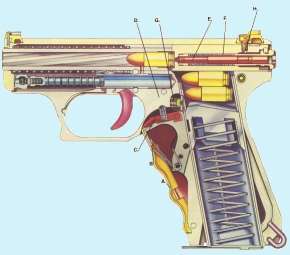
P7M13 Cut-away
*************************************************************************************************************************************
Self-loading Pistol
"Heckler & Koch" P7

| Model | P7 M8 | P7 M10 | P7 M13 | P7 K3 |
| Caliber | 9 mm | 10 mm | 9 mm | 9 mm |
| Cartridge | 9 x 19 mm (Para) | 10 x 21 mm (.40 S&W) | 9 x 19 mm (Para) | 9 x 17 mm (.380 ACP) |
| Dimensions and weight | ||||
| Total weight (with loaded magazine) | 950 g | ? | 1 140 g | 880 g |
| Total weight (with empty magazine) | 790 g | 1 120 g | 860g | 750 g |
| Overall length | 165 mm | 175 mm | 175 mm | 155 mm |
| Barrel length | 105 mm | 95 mm | ||
| Fire characteristics | ||||
| Bullet initial speed | 350 m/s | 310 m/s | 350 m/s | 300 m/s |
| Practical rate of fire | 30 rpm | 35 - 40 rpm | 30 rpm | 30 rpm |
| Magazine capacity | 8 rounds | 10 rounds | 13 rounds | 8 rounds |
| Sighting range | 50 m | |||
The "Heckler & Koch" company is a German famous for it's unique design and unordinary technical solution firearms.
Pistol automatic works on partly free lock recoil principle with a gas delay system. One of the most unordinary feature is pistols cocking system integrated in the grip. Hammer is cocked only when grip is properly held. In other way hammer is dropped and pistol is safe. Such design decision made unnecessary usage of manual safeties as a cocking leveler works as an automatic safety-lock as well. The P7 Pistol has a "double-action" only trigger mechanism and can be safely carried with a loaded round. This feature allows to increase pistol's combat load by one round in extreme situation.
Cocking leveler requires quiet hard push power although even light power it is enough to hold it. When magazine is out of rounds and the slide locks in it's backward position it is enough to release the leveler and to push it once more to release the slide.
Cartridge-case extractor works as a barrel load indicator as well. When a round is loaded the extractor protrudes above the slide and is both visible and can be felt by shooter's hand.
Gas delay system has much in common with the HK MP-5 Submachine Gun. It uses pressure from the just fired cartridge and it's function is to reduce the recoil power and recoil impact felt by the shooter. One more solution to minimize recoil power became a low profile slide combined with pistol's low center of gravity. These features considerably decrease shooters felt recoil power and positively affect on fire accuracy.
common with the HK MP-5 Submachine Gun. It uses pressure from the just fired cartridge and it's function is to reduce the recoil power and recoil impact felt by the shooter. One more solution to minimize recoil power became a low profile slide combined with pistol's low center of gravity. These features considerably decrease shooters felt recoil power and positively affect on fire accuracy.
The P7 is completed with a fixed to the frame polygonal rifling barrel manufactured by cold hammer forging. Such feature has some advantages over convenient rifled barrel such as slightly improved fire accuracy and bullet initial speed. Polygonal rifled barrel also is easier cleaned and has increased service life. Despite of it's short looking barrel the P7 has usual dimensions one comparing with other pistols.
Pistol has an opened fixed sight. The rear sight is adjustable.
The "Heckler & Koch" P7 Pistol is produced in the following models:
- The PSP Pistol (Polizei Seldstable Pistole or Police Self-loading Pistol) was designed by "Heckler & Koch" since the 1971. The first prototypes of the PSP Pistol appeared in 1976 and it's serial production began in 1979. After it's adoption by a number of German police formations it was oficially renamed to Pistole 7 - HK P7. In 1981 the P7 pistol was replaced in the production line by it's improved model P7 M8.
- The P7 M8 is recently a base pistol model. However there are only some minor differences between it and the HK PSP. The P7 M8 has a smaller trigger guard and European-style magazine release in the bottom of the frame.
- The P7 M10 is a model intended for USA market. It appeared in 1991. Pistol is chambered for 10 x 21 mm (.40 S&W) cartridge. It is similar to the base model except slightly larger dimensions. There were intentions to design the P7 chambered for 12.43 x 23 mm (.45 ACP) cartridge but unfortunately these efforts failed due to complicated in production and expensive recoil absorber.
- The P7 M13 pistol was designed in 1982. It is intended for military or law enforcement forces only. It is similar to the P7 M8 except a 13 round magazine.
- The P7 K3 has appearance almost identical to the P7 M8 and P7 M13 pistols. The main differences are in unique decreasing recoil power hydraulic buffer. This pistol features good fire control. Basically it is chambered for 9 x 17 mm (.380 ACP) cartridges. Although it has removable barrel and can additionally be converted to .22LR or 7.65 x 17 mm (.32 ACP) caliber cartridges using easy-to-install conversion kit. This feature provides economical practice shooting. The K3 model has no gas delay system of it's lower power cartridges. This model is mostly intended for target shooting and self-defense.
One more variant of the P7 Pistol is the EP7. It is manufactured in Greece EVO factory under license and is i n service with the Greece armed forces and police.
n service with the Greece armed forces and police.
Advantages
Good fire accuracy for a compact pistol and quiet high reliability. Comfortable handling (for 8 round magazine pistols) and compact dimensions. No manual safeties. Pistol is well made and features very good balance. Light trigger push power compared to ordinary "single-action" pistols. Also it features low recoil power determined by low positioned barrel.
Disadvantages
Low magazine capacity. High price. Pistol requires precise care and cleaning of it's unordinary internal design. After firing two or three magazines weapon becomes so hot that it is impossible to touch slide.
**************************************************************************
www.truthaboutparts.blogspot.com
www.tjofsugarland.blogspot.com
www.handgunpartsforsale.blogspot.com
www.hipowersandhandguns.comwww.ki4u.com
www.seecamp.com
http://www.jtf.org/news.php
http://www.rabbiyess.com
http://www.cdnninvestments.com
http://www.z-medica.com/quikclot/index.asp
www.thetrumpet.com
www.staceydean.org
California has just experienced another crisis. It has just seen its biggest outbreak of wildfire—it broke all past records. Some 750,000 acres were burned, about 3,600 homes destroyed and 20 lives lost.
Here is what U.S.News & World Report wrote about it: “Throughout the American West, trees already short of nutrients because of crowding are suffering from A FOUR-YEAR-OLD DROUGHT, THE WORST IN 300 YEARS. Bark beetles have attacked the weakened trees across much of the West, killing up to 70 percent of them in some areas. In San Bernardino National Forest, beetles have ravaged half a million acres so far. When fire does break out, the crowding allows flames to leap treetop to treetop in a fast-moving crown fire, as happened in parts of Southern California last week” (Nov. 10, emphasis mine).
California had a six-year drought at the end of the 1980s. Now it has suffered through another multi-year drought.
That state also has a $38 billion deficit, the worst of any state in the United States. It cost a governor his job.
What is happening in California?
Here is an excerpt from a Trumpet article I wrote in December 1993: “One disaster after another is striking California. These deadly disasters are repeatedly labeled the ‘worst ever’! … With all the disasters that have struck California the past few years, it’s as if the state is under a curse.
“The recent fires in Southern California were their WORST EVER. One lady said, ‘[I]t was like the wrath of God.’ [Could it be connected to the wrath of God?]
“These fires revealed an even greater crisis. Reports say 20 of the 26 fires were set by arsonists! The Los Angeles area is seething with all kinds of hatred—which is only a microcosm of the entire nation. In many areas of the U.S., racial hatred is ready to explode like the Southern California firestorm. And we no longer have the WILL to implement the strong government action that is needed! …
“The Rodney King and Reginald Denny trials … inflamed racial tension. The 1992 Los Angeles race riots were that city’s WORST EVER. They were some of the deadliest riots in U.S. history! Others fear riots will also occur in their cities. [That is a justifiable fear.]
“In 1991, wildfires in Oakland, California, destroyed 2,900 structures, and 25 people died from the fires. These fires were the WORST EVER in California! The state is now struggling with a budget deficit that is the WORST EVER—BY FAR—that any American state has faced!
“A six-year drought ended in 1991. It was the WORST EVER in California! That drought was followed by heavy rains and flooding which caused the heavy growth of grass, shrubbery and weeds that LED TO THE DANGEROUS FIRES.”
Actions By T - Teddy Jacobson PistolsmithThis site is the official web site of Teddy Jacobson - A World Famous Pistolsmith, now in business for 25 years! Teddy is the only Pistolsmith in North America who just does Internal Action Work on over 100 different models of handguns. He has no competition, because there is no competition. Teddy is in a league... www.actionsbyt.com/Actions By T - Teddy Jacobson Pistolsmith- Teddy Jacobson Pistolsmithve actionsbyt.com/pricing-springs.htmAnyone have experience with Teddy Jacobson? - HKPRO ...Thanks fellas. I managed to get in touch with Bruce Gray! I'm going to send my compact to Mr. Gray and send a brand new mil spec Springfield 1911 to Teddy Jacobson (he recommends them as the best bang-for-your-buck 1911s on the market). Gonna spread the love. Can't wait to see the results. & donger8. View Public... hkpro.com/forum/showthread.php?t=31...Gunsmiths, gun parts and services - THE GUN GUY® ...Click on a cartridge base for desired section! GUNSMITHS & SERVICES. GUN PARTS. "CLASSIFIED" AD SITES. AUCTION SITES. Copyright 1997-2008 The Gun Guy LLC. The Gun Guy is a registered trademark. All rights reserved. Legal Notice: This material may not be published, rewritten or redistributed in any form without permission... www.webcom.com/gun_guy/page7.htm | Helpful Tip of the Day: 2007-07-22This "hidden" work has resulted in a very good 1911 pattern pistol and one that I would absolutely trust in a serious situation. Even though the pistol was working fine and in stock condition, I did upgrade the internal parts with those supplied by trigger specialist, Teddy Jacobson of Actions by T. The trigger... actionsbyt.blogspot.com/2007_07_22_...Teddy JacobsonTeddy Jacobson is a World-Famous Gunsmith, also known as Actions by "T". There is a T on every action he works on. I will be providing links to some of Teddy's work from Courtesy links. All work and derivatives of the copywrited versions are by permission and brought to you by ShooterSolutions.com. PEOPLE. Actions... www.molyfusion.com/teddyjacobson.ht...Article on the MAKAROV pistol By Teddy Jacobson ...Practical Machinist - The Manufacturing Forum &Open Discussion &Gunsmithing & on the MAKAROV pistol By Teddy Jacobson. PDA. View Full Version : Article on the MAKAROV pistol By Teddy Jacobson. koginam. 02-05-2008, 05:50 PM. Article on the MAKAROV pistol By Teddy Jacobson http://thegunsmiths.com/phpBB2/viewforum.php... www.practicalmachinist.com/vb/archi...Tricked out USPC? [Archive] - HKPRO ForumsI have had a USP9f for several years know and can get 2 inch groupings at 50ft. So my first choice for a ccw was a USP9c. However, after firing both (10 with one and 10 with the other) I noticed that the USP9c did have more triger travel and I was not impressed with the slide return. Other than those few items... hkpro.com/forum/archive/index.php/t... | LinkSelect Hunting & Shooting Link Directory- No BS ...Description:Welcome to the no BS zone of Teddy Jacobson - If you want the truth you have come to the right place! (email this link to a friend) Reviews. Home Page | Alpha - A to Z | New Links | Editor's Picks | Hot Links | Add Your Link | Edit Your Link | Contact Us. While you're at our site, check out these other... www.linkselect.com/hunt/5890.htmlAnyone have experience with Teddy Jacobson? [Archive] ...Thanks fellas. I managed to get in touch with Bruce Gray! I'm going to send my compact to Mr. Gray and send a brand new mil spec Springfield 1911 to Teddy Jacobson (he recommends them as the best bang-for-your-buck 1911s on the market). Gonna spread the love. Can't wait to see the results. ToyCollector. 07-13-2005... hkpro.com/forum/archive/index.php/t...Helpful Tip of the Day: STEPHEN CAMP - MASTER GUN ...Teddy Jacobson is a professional pistolsmith from Sugarland, Texas. His self made business has been in business for 25 years. Actions By "T" has earned a reputation of superior workmanship and reliability throughout the World. Actions By "T" has been showcased in Gun World, Combat Handguns, American Handgunner... actionsbyt.blogspot.com/2007/07/ste... |
.......................................................................................................................................
Sunday, March 05, 2006




